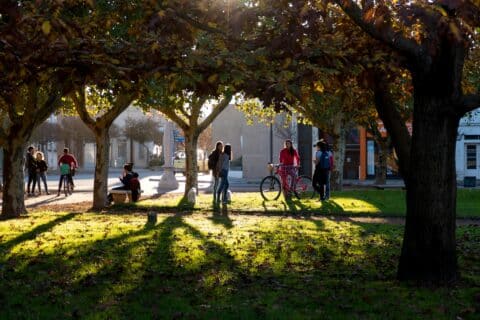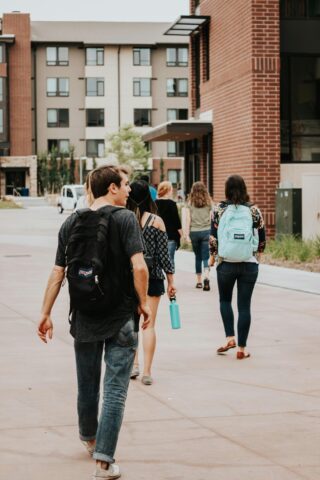Introduction: In the realm of campus safety, knowledge truly is power. Every incident, patrol, and response generates valuable data – if we have the tools to capture and learn from it. Today’s advanced safety platforms are turning this data into actionable insights, allowing universities to shift from a reactive stance to one of continuous improvement. Gone are the days of operating on gut feeling or outdated assumptions. With real-time dashboards, analytics, and reporting, campus safety leaders can now measure what matters, identify trends, and make informed decisions that elevate the security and well-being of their community over time.
Visibility and Accountability Through Data
One immediate benefit of a modern safety solution is unprecedented visibility into operations. Take the example of routine security patrols: traditionally, it was hard to know if officers were covering all areas effectively or if important spots were being missed. SafeZone solves this by providing intelligent heat-maps and activity logs. Security managers can literally see where and when their team patrolled, broken down by day, shift, or hour. This level of detail means managers can verify that patrol routes are being followed and adjust coverage in response to emerging issues. At the University of York, for instance, the team discovered through SafeZone’s data that some campus areas weren’t being visited as often as needed. In response, they reallocated patrol efforts to those weak spots – and saw a reduction in problems like bicycle theft as a result. “By using the SafeZone heat map, we can identify what areas aren’t being covered… e.g. cycle theft hotspots, and redirect people there to reduce crime,” noted the campus Security Manager. This is data-driven security in action: the evidence guides the strategy, leading to tangible improvements.
Likewise, real-time incident tracking and post-incident analysis hold everyone accountable. When an emergency occurs, the system records each step – who responded, how long it took to resolve, and all communications involved. Afterwards, supervisors can replay the timeline to spot what went well and where there were delays or confusion. SafeZone provides “extensive reporting and playback of every incident, including second-by-second details of all communications and responder locations,” which greatly enhances after-action reviews. Instead of vague recollections, the team has hard data to discuss: Was the response time within our standard? Did protocol get followed? If not, where can we improve? This continuous feedback loop turns every incident (even minor drills) into a learning opportunity. Over time, it drives a culture of accountability and excellence – team members know their actions are visible and measurable, which incentivizes adherence to best practices.
 Continuous Improvement and Strategic Insights
Continuous Improvement and Strategic Insights
Data insights do more than optimize daily operations; they also help campus leaders make strategic decisions about safety resources and policies. Patterns that emerge from the data can inform staffing (e.g. do we need more officers on Friday nights?), training priorities (e.g. are medical emergencies taking too long to handle, indicating a need for first-aid training?), and investment decisions. The University of South Australia originally identified “the ability to monitor performance against KPIs and build a continuous improvement culture” as a key requirement for its safety upgrade. After implementing SafeZone, they achieved exactly that – gaining practical metrics to ensure their security team was meeting targets and to pinpoint where adjustments were needed. The platform even helped demonstrate compliance with safety obligations: by automatically logging patrols and incident responses, the university could show provable adherence to health and safety regulations (a “practical, reportable compliance” that auditors love to see).
From a leadership perspective, having this trove of safety data is immensely valuable. It equips Vice Chancellors and administrators with evidence to justify budgets and illustrate improvements. For example, when Heriot-Watt University’s security team improved their emergency response times by over 50% after rolling out SafeZone, that metric was a powerful testament to the initiative’s success. Such quantifiable results make it easier to secure funding and campus-wide buy-in for safety programs – it’s no longer just “trust us, we think we’re doing better,” but “here’s the data showing how much better we’re doing”. Moreover, data trends can alert leadership to emerging risks before they escalate. A spike in alerts from a particular residence hall, for example, might prompt proactive outreach or preventive measures in that location.
In essence, modern campus safety technology turns a security department into a learning organization. Every patrol path and emergency drill feeds into a cycle of refinement. Over weeks and months, these small gains add up to major improvements in how effectively the institution protects its people. The ability to measure and adapt is what separates a truly progressive safety program from one that’s just going through the motions.
Conclusion and Call to Action: Building a safer campus is not a one-time project – it’s an ongoing process of learning and improvement. With the right tools in place, universities can continually raise the bar on their safety performance, guided by real evidence. The message to campus decision-makers is clear: embrace the data. By leveraging real-time insights from solutions like SafeZone, you empower your team to become ever more effective and you gain the clarity to make strategic choices that enhance security and trust on campus. Don’t fly blind when it comes to safety. Invest in the capability to see, measure, and improve every aspect of your campus safety operations. If you’re ready to transform heaps of safety data into actionable improvements, CriticalArc can show you how SafeZone’s Operational Insights turn everyday information into life-saving knowledge for your campus.
